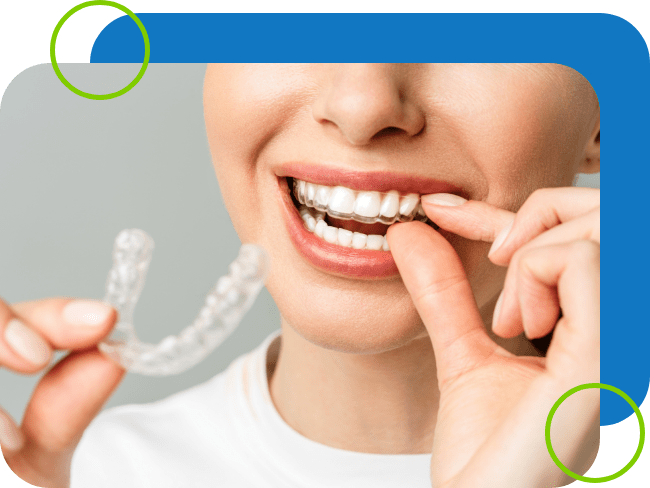Braces And Aligners
Braces?

Braces Used For

Adult Dentition
- Crowding or haphazardly placed teeth which can lead to poor oral hygiene and causes caries.
- Improper bite that affects mastication.
- Teeth which are crooked in appearance and causes periodontal problems like bleeding gums, bad odor or premature tooth mobility.
- Improper alignment of teeth also leads to calculus deposition.
- Proclined teeth causes a convex profile.
- Spacing between the teeth can cause speech problems.
Mixed Dentition
- Disorders affecting the growth of jaws which can be corrected in this stage in a non-invasive manner.
- Crooked teeth can be repaired, it is advisable to do this at an early stage to prevent damage to a child’s psychology
Right Time For Braces
Types Of Braces Available?
Metal Conventional Braces
These are the most traditional and common type of braces. They are small and comfortable to be used. They are usually tied with elastics which comes in various colors. These wires use body heat to move the teeth painlessly and quickly. There is no age limit as patients of all age can choose to use braces to improve crooked teeth.
Metal Self-Ligating Braces
These are metal brackets with a shutter or lock system. They are more comfortable than conventional braces and are helpful to expand arches and minimizing the need for extraction.
Ceramic Braces
These have clear brackets. They are aesthetically pleasing and blends naturally with your teeth. The shape and size are similar to metal braces. They are not as visible on teeth. However, they might require more care and protection compared to metal braces as they are brittle. They are usually used in upper teeth.
Lingual Braces
They are heavier comparatively and are placed behind the teeth. They can be made with lots of metals including silver and gold. The individual bracket is customized using CAD/CAM designing. It is highly aesthetic and less visible to the naked eye.They however might cause mild speech difficulties during the treatment.
Aligners
These are made with medical grade plastic trays and do not require any braces or wire. They are invisible to the naked eye and are usually used in adults. They are highly comfortable and hygienic. They also hide diastemas or existing gaps between the teeth.
Post Treatment Care For Braces
- Brush and floss twice a day with special orthodontic brushes to prevent food accumulation and periodontal problems.
- Visit your dentist for regular checkups.
- Brush gently withBe patient. The teeth take time to adjust accordingly. proper techniques
Do's And Don'ts With Braces
Do's
- Try to avoid sticky food like gum or caramel.
- Ask for a mouth guard.
- Consume healthier drinks low on sugar content.
- Brush after every meal
- Must visit dentist for follow-up.
- Floss like a boss.
Don'ts
- Don’t chew hard food or ice.
- Do not bite your fingernails.
- Don’t consume sugary drinks like soda or cold drinks.
